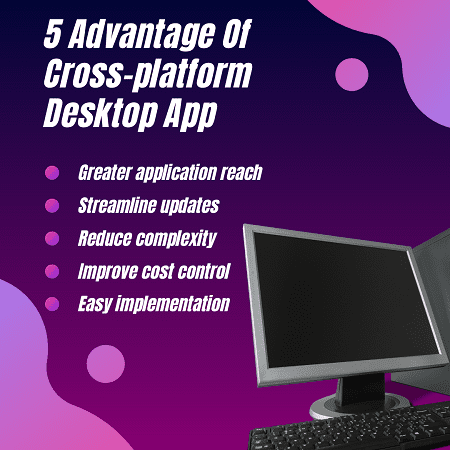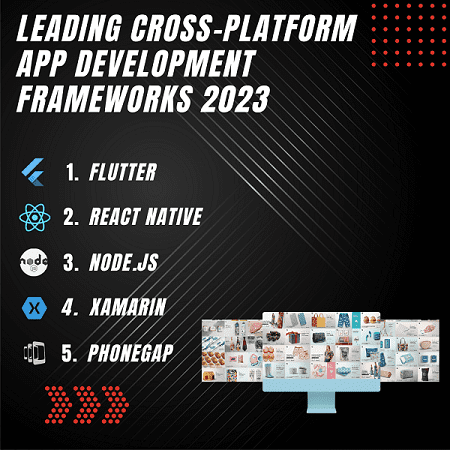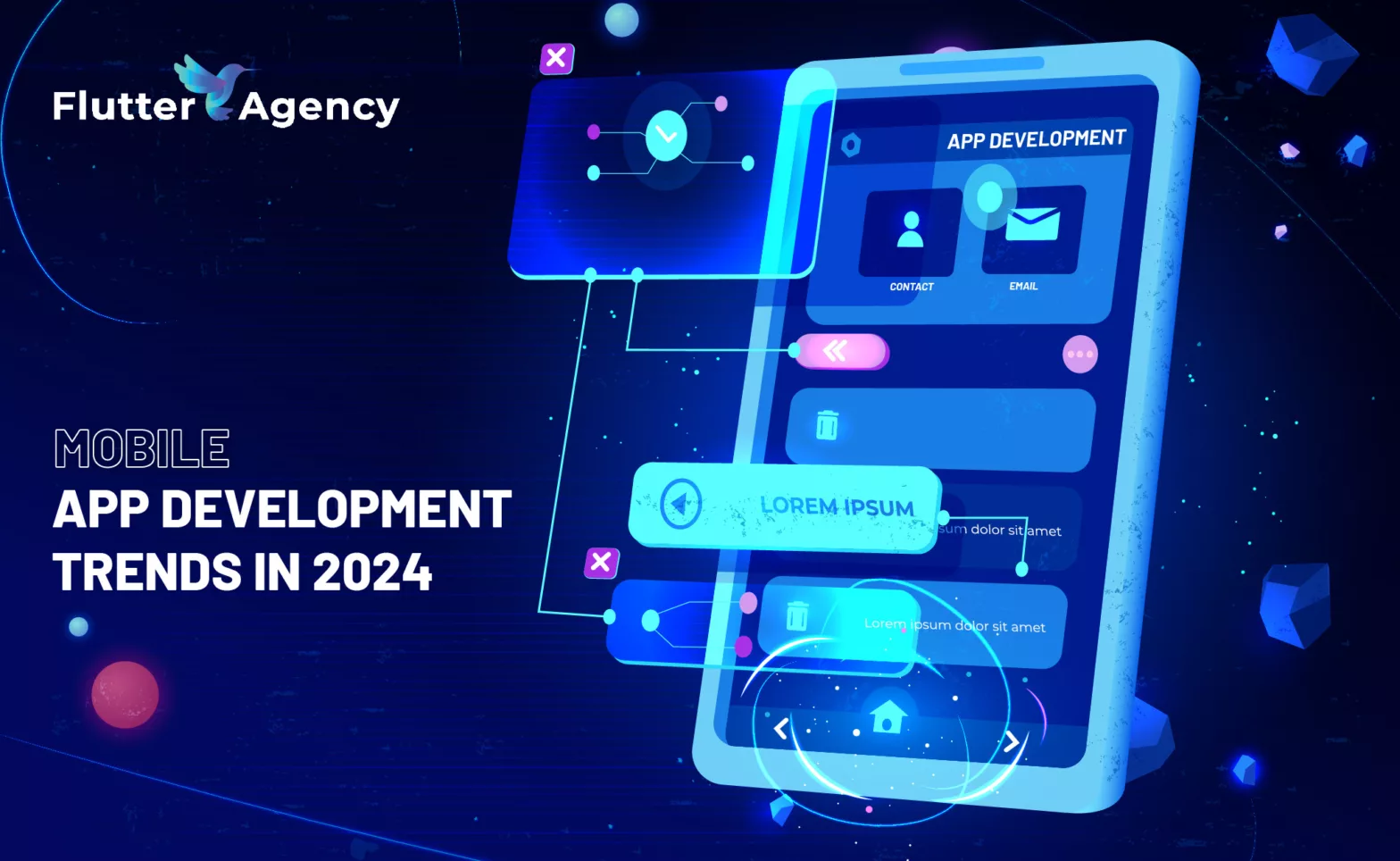The Upcoming Trends in Cross-platform Desktop App Development in 2023
In the era of smartphones and cloud computing, desktop apps are no longer the first choice for businesses. But also, many organizations still rely on desktop apps to carry out their day-to-day tasks. Cross-platform apps are quickly becoming famous in the enterprise industry as they want seamless collaboration between the different operating systems and devices. This article will show the benefits of cross-platform for the business and some of the leading cross-platform frameworks in 2023.
Cross-Platform Desktop Apps: Introduction and Advantages
Cross-platform desktop apps can be installed and utilized on various operating systems. It means they do not stick to the particular operating system and can be used on any PC with the needed software installed.
There are some benefits of using cross-platform apps, which are listed below.

1. Greater application reach
The more platforms your app runs on, the larger your reach to the audience. Rather than designing and distributing the application for windows and then beginning the process for OS X, Linux, and Chrome, you can prepare the application for all the platforms from day one. It will automatically increase your reach to the audience and your app users.
2. Streamline updates
Native apps are required to be updated individually to reflect the platform changes. But, with the help of cross-platform applications, you can make a single change like an updated library or the new API that will take the reflection on all the platforms. Hence it reduces the time and effort needed for the updates and makes it easy to manage application code.
3. Reduce complexity
As code is compiled once for the various platforms, the overall complexity is reduced. Rather than searching the multiple sets of code for the configuration error network problem, the developers have one set of the source code to analyze.
4. Improve cost control
Native apps need end-to-end development, meaning companies spend more time hiring the development and designing teams or the in-house resources for those projects. But with the help of cross-platform app development, both designing and development are centralized.
5. Easy implementation
Using the same toolset, Libraries and packages the programmers can rapidly and easily integrate apps on multiple platforms. Hence, it reduces the time and effort necessary for the effective development of enterprise applications.
Cross-platform Desktop Apps Gaining Popularity
Cross-platform desktop apps are getting popular in recent times for a myriad of reasons. In the increasingly mobile world, it is necessary to have a mobile app development process that works well on different devices. However, cross-platform apps provide consistency, and due to this, it is becoming popular. If you think of making a desktop app in 2023, choose cross-platform development. Let’s see some of the factors below that have get popularity:
- It allows you to reach a wider audience with your application, as it is easy to develop, maintain, and cost-effective.
- Cross-platform apps are written in a language that can be compiled for different platforms. You can reach your targeted audience on Windows, Mac, Linux, and mobile devices with a single codebase.
- Creating multiple platforms is daunting, but the cross-platform frameworks make it much easier. Hence, these frameworks give the building blocks for your app, so you do not have to begin from scratch for each platform.
- Maintaining separate codebases for each platform is time-consuming and expensive. With the cross-platform app, you can fix errors and bugs and add new features and functionalities in one place, and they will be automatically available on all platforms.
- Cross-platform apps are more affordable to develop in comparison to native apps as they need minimal effort and time. It has the potential to reach a larger audience, which will offset the cost of development.
- Cross-platform apps tend to have a shortened development cycle, which means you will get your product into the market faster.
Leading Cross-platform App Development Frameworks 2023
As there are many reasons to make the cross-platform desktop app, one of the major reasons is that it allows your app to reach the largest possible audience. With so many various devices and operating systems, developing an app that works on them becomes difficult. A cross-platform desktop app ensures that your app will work on any gadget or operating system.
Various frameworks are available for cross-platform app development, and the best one for your projects will depend on your project’s particular needs. The following frameworks are considered the best options for cross-platform development in 2023.

1. Flutter
Flutter is a free and open-source software development kit developed by Google. It allows the Flutter developers to make a high-performance cross-platform framework with a single codebase that works on Android and iOS platforms.

Advantages
- Flutter hot reload feature means that you can make the changes in your coding and view the results in real-time without restarting the application. Hence, it saves development time and frustration during a development procedure.
- Flutter also has material design widgets. However, these widgets will give the app a sleek, modern look, which will impress your users.
- With the Dart programming language, Flutter applications are compiled ahead of time, which means they run faster and smoother on devices.
- Flutter web app development also supports the internalization that is essential if you want to reach an audience worldwide. With the Flutter framework’s help, you can make applications available in multiple languages.
Also, Read This Post:
Flutter vs. Kotlin:Which framework to select for your next development project
2. React Native
React Native is the JavaScript-based framework that Facebook develops. It allows the developers to develop cross-platform mobile apps using the same codebase. Hence, it makes it possible to create apps for Android and OS simultaneously.
Advantages
- The code reusability of React Native allows a developer as they do not to need to make different codes for different platforms. Approximately 90% of the code is reused between the platforms, which increases development speed and efficiency considerably. Hence, you will get a faster time-to-market and need lesser maintenance efforts.
- A live-to-reload functionality of React Native permits you to view and work with the changes in real time. You are making the fixes in code while an app is loading, which will automatically be reflected in the app. A reload-specific area will save time on the compilation.
- React Native also uses the React JavaScript library to create an app interface that is fast and responsive. It has greater rendering abilities and uses a component-based approach that makes it easy to make simple and complex UI designs.
- Creating the app from scratch could be expensive, but with the help of React Native, it delivers several third-party plugins with JavaScript-based and native modules. The third-party plugin will eliminate a requirement for particular web view functions and helps to enhance the app’s functionality and performance.
3. Node.js
Node.js is the JavaScript-based runtime environment that permits developers to make cross-platform desktop apps with CSS, HTML, and JavaScript. Large firms mostly use Microsoft, Slack, and WhatsApp.
Advantages
- Node.js has no steep learning curve. The coding in Node.js is easy to grasp after you have mastered JavaScript and object-oriented programming basics, and it is enough to begin. Make sure you have the client-server model in your mind and catch up with the Node’s asynchronous flow.
- With the help of Node.js, developers find it easy to scale an application in horizontal and vertical directions. The app is scaled horizontally by adding a node to an existing system. Hence, Node.js allows you to add extra resources to a single node during the vertical scaling of the app. So, it is highly scalable and gives you a better option than the other JavaScript servers.
- Node.js also offers developers the freedom to write server-side applications in JavaScript. It also allows coders to write front-end and high-end web apps in JavaScript using the runtime environment. It also made the deployment of apps simpler because all browsers support JavaScript.
- Earlier, Node.js interpreted the JavaScript code through the Google V8 JavaScript engine. This engine compiles any JavaScript code directly into machine code. It makes it easier and faster to integrate code effectively. Therefore, the speed of code execution is enhanced by a runtime environment as it supports the I/O operations.
- Node.js is highly extensible, which means you can customize and further extend Node.js as per your needs. Also, use JSON to give the scope for the data exchange between the web server and client. It also facilitates in-built APIs for making HTTP, TCP, DNS, and many more servers.
4. Xamarin
Xamarin is the cross-platform app development framework that Microsoft develops. It helps the developers to make native apps with the.NET, and C# has access to all of the features of the underlying platform.
Advantages
- Xamarin app development is the best for businesses to give time-effectiveness as well as ease of creation for the developers. A single language or technology stack is used for making the multiple platforms solution without switching to an environment. A single technological stack in Xamarin frameworks may be easy to use and learn.
- Xamarin app development has 95% of the code that can be used once it is written. It will reduce the amount of time needed to complete tasks and also reduce the effort. Hence, the developers can run the unified codebase across multiple platforms with minimal change.
- Xamarin test clouds allow developers to test their applications constantly during development, resulting in faultless code generation. Additionally, it is used across multiple platforms to test the applications without buying multiple devices for individual testing. However, finding the performance issues before a release of an app makes it the cost-effective solution compared to other frameworks.
5. PhoneGap
PhoneGap is a cross-platform app development framework that uses CSS, HTML, and JavaScript to develop native apps. It was made by Adobe and allows n programmers to target multiple platforms with a similar codebase.
Advantages
- The PhoneGap is a cross-platform that uses a single codebase and can replicate one code to various devices. These PhoneGap apps will build the services per the specific platforms’ requirements.
- PhoneGap has a robust backend source powered by Apache Cordova and is part of Adobe. It provides you with a few tools and various features which will help the app developers for an extended period. Hence, you have found the PhoneGap content sync, which helps you to fetch and cache an app’s content. Hence, AEM will help you to preview the changes and test an app that you have created within your app.
Conclusion
Cross-platform desktop apps give a unique and exciting way to involve your customers in 2023. As the industry is rapidly evolving, these apps offer the opportunity to stay ahead of the curve and will reach a broader audience across platforms. It allows developers to keep up with the latest mobile app development trends, as it helps you to save time, money, and resources as you create an app that is compatible with all operating systems.
If you want to develop a cross-platform app for your business, then we have a pool of experts who can develop the app at a competitive pace. Get in Touch with us to get a project estimation!
Frequently Asked Questions (FAQs)
1. What are the benefits of cross-platform apps?
By opting for cross-platform mobile app development, you will get lower cost, easier deployment and maintenance, faster turnaround time, and the accessibility of ongoing support. Hence, all these factors working together help the business to increase its performance and raise its ROI.
2. What is the meaning of cross-platform compatibility?
It is also known as interpretability or platform independence, as they have the ability for the devices or software apps to work with more than one of the hardware platforms or operating systems. Broad compatibility with the different systems is vital to have a large market for the product.
3. Why select cross-platform development?
By selecting cross-platform development, there is no need to create different applications for the various platforms. Hence the developers can build and publish the apps on multiple app stores simultaneously. It means you can reach the audience on iOS, Android, and Windows faster and give them high-quality apps.
Contemporary ventures
Recent blog
ready to get started?
Fill out the form below and we will be in touch soon!
"*" indicates required fields










